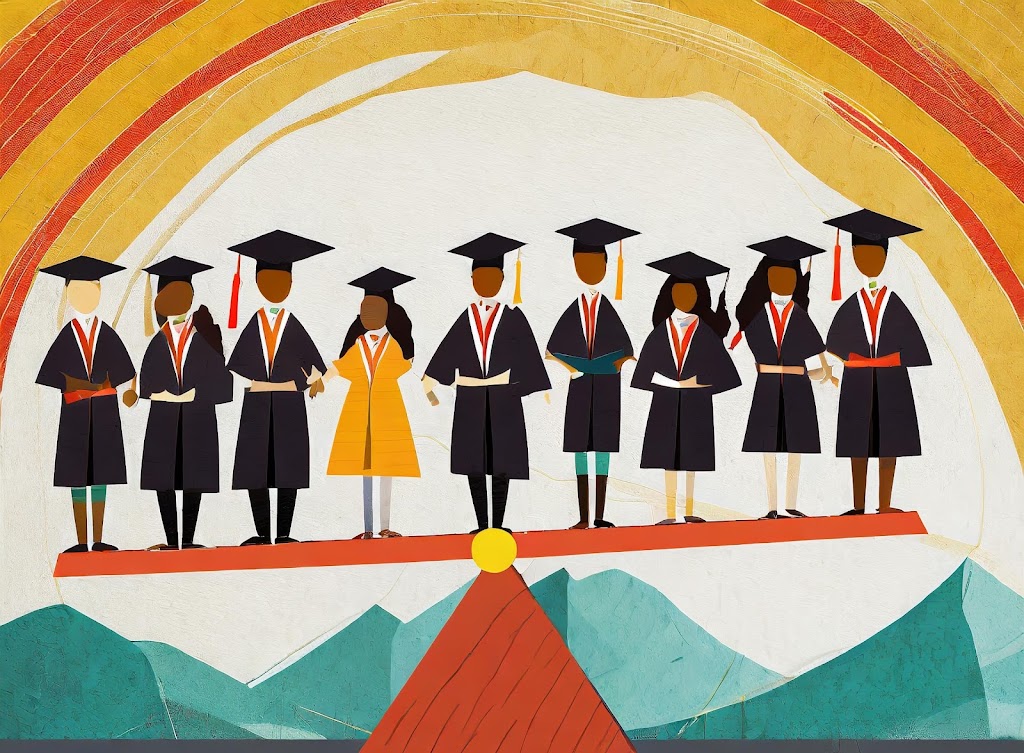
From Quotas to Needs: Rethinking Educational Quotas in Nigeria
Rooted in the United States, affirmative action, also known as the Nigerian quota system, was introduced in Nigeria decades ago to address historical and regional imbalances in education and employment opportunities. Noble in concept, but strangely configured in practice, the story of the quota system in Nigeria is one that has betrayed its original purpose, promoting mediocrity and disunity at the detriment of hard work and excellence. This prompts a crucial question: Has the system, since its adoption, truly achieved its intended goals?
The educational quota
system emerged in the 1960s to counter regional imbalances in educational
attainment. The North, for cultural and geographical reasons, lagged behind the
South in terms of school enrollment and academic performance. Intended as a
temporary measure, the system allocated admission slots based on predetermined
regional quotas. Unfortunately, over time, this system has transformed from a
bridge to a barrier, undermining the whole purpose of its adoption.
Several decades after the
adoption of the educational quota system, assessing its efficacy raises
critical concerns. Alarming literacy rates persist in the North, hovering just
above 50 per cent, with states like Yobe having as low as an alarming 7.23 per
cent, according to a Statista report. Enrollment rates further compound the
issue, painting a grim picture of educational access in the region. States like
Borno reveal a stark reality, where over 70 per cent of children aged between 6
and 16 have never set foot in a high school (Punch Editorial).
These disheartening
statistics underscore a fundamental flaw in the system. Instead of fostering a
commitment to education and bridging regional disparities, the quota system
appears to have allowed the northern leadership to pay mere lip service to the region’s
development. The intended purpose of equalizing educational opportunities has
been overshadowed by persistently low literacy rates and high rates of
non-enrollment, pointing to a system in dire need of reevaluation and reform.
A glaring paradox of the
educational quota system unfolds within the premises of Unity Schools,
institutions designed to foster national unity and integration. In
the academic year 2020/2021, the Federal Ministry of Education set admission
cut-off marks, exemplifying the stark contrast between the Southern and
Northern states. The 104 Unity Schools nationwide exhibited a disheartening
scenario: while the average cut-off for the South-East stood at 134, states in
the North had cut-offs as low as 20 marks, with Zamfara state having an absurd
2 marks.
Consider a poignant
scenario: A child from Anambra in the South, having scored 100 points, finds
herself denied admission. In contrast, her counterpart from a Northern state
gains entry with a mere 2 points. Can we expect a sense of patriotism to
flourish in the child from Anambra, who witnesses such a stark contrast in
admission criteria?
The quota for ‘what,’ exactly, remains a critical loophole the system suffers from. Is it for economic disadvantage, or simply geographical origin?
The answer is crucial, as the current blanket categorization in favor of the
latter opens the door to manipulation and exploitation, favoring individuals
with perceived entitlements over those truly in need.
To drive home the point
about the inherent flaws in the quota system, let’s consider an analogy
involving two aspiring students, each vying for a limited slot in a prestigious
institution where the South is classified as educational disadvantage.
Kid A hails from the
South, his parents being third-generation university professors and members of
a royal family. On the other hand, Kid B, from the North, is a product of a
single-parent household, attended a public secondary school, and hails from a remote
part of the region.
In the current system,
the blanket categorization favors Kid A from the South due to the broad
classification of educational disadvantage. However, a nuanced approach is
needed. A needs-based quota system would consider the specific challenges faced
by Kid B, such as poverty and educational disadvantage, giving her the
affirmative action needed to break the cycle of generational hardships.
The path forward demands
a nuanced approach that moves beyond the simplistic North-South binary. The
internal diversity and educational disparities within each region must be acknowledged.
A needs-based quota system, focusing on factors like poverty, educational
disadvantage, and gender, offers a more equitable solution where the northern kid from the analogy gets the affirmative action to launch upward in the rung
of social mobility. Moreover, prioritizing merit within these quotas is
crucial. Setting minimum qualification standards while reserving a reasonable
percentage of slots for disadvantaged groups can strike a balance between
inclusion and excellence.
While the
educational quota system in Nigeria had noble intentions, its flawed
application has fueled disunity and mediocrity. Rethinking its
implementation, focusing on specific needs, and prioritizing merit can
transform the system into a tool for real progress and inclusion. This shift
is essential to ensure that every Nigerian child, regardless of origin, has the
opportunity to reach their full potential.
